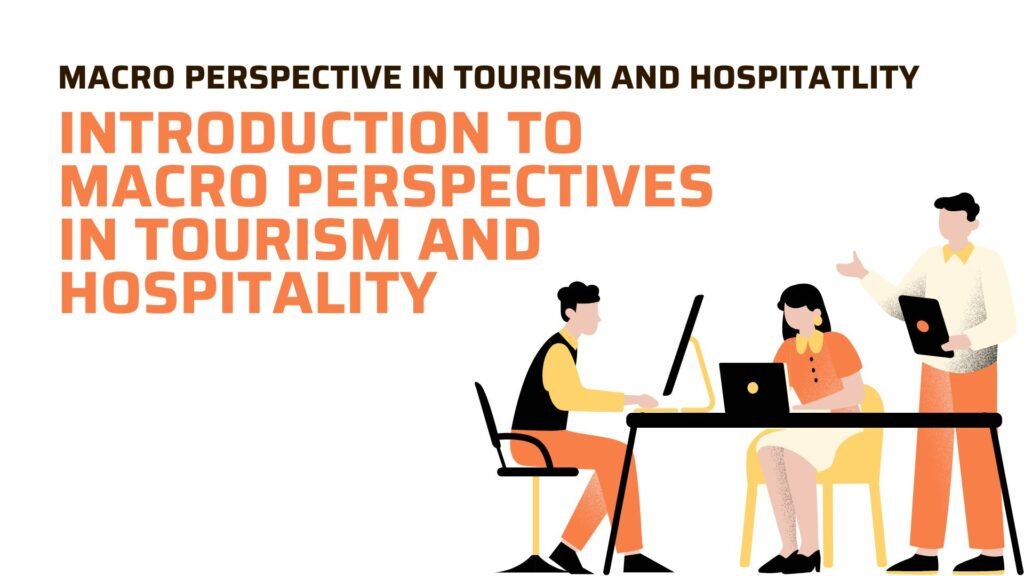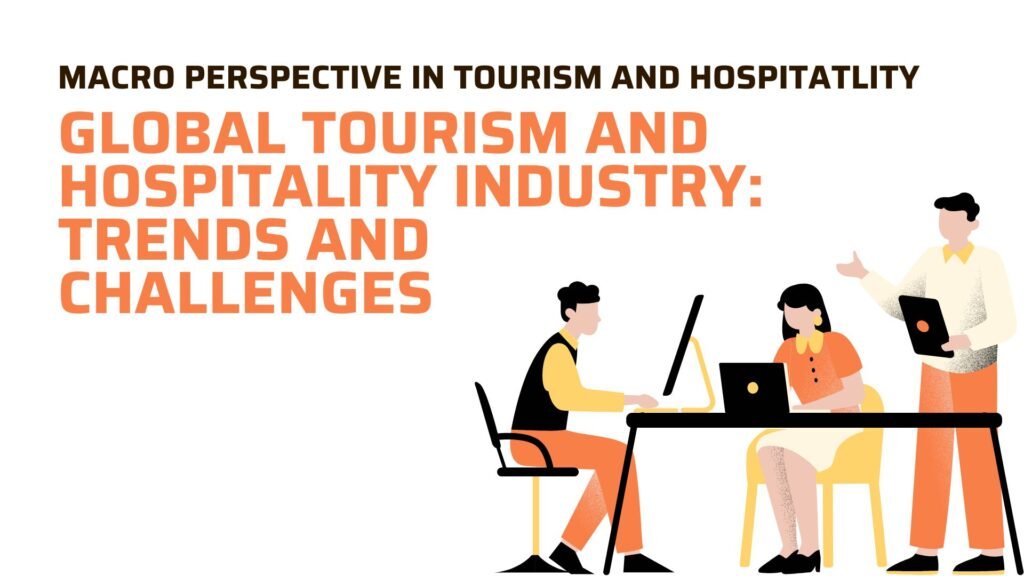
The tourism and hospitality industries have been transformed by technological advancements and innovative solutions that enhance operational efficiency, customer satisfaction, and competitive advantage. Technology has become a critical enabler in shaping guest experiences, optimizing processes, and responding to rapidly evolving market demands. This lesson explores the transformative impacts of artificial intelligence (AI), virtual reality (VR), big data, and smart tourism on the tourism and hospitality sectors.
1. The Role of Technology and Innovation
Definition:
Technology and innovation in tourism and hospitality involve the application of advanced tools and systems to streamline operations, enhance customer experiences, and create new opportunities for growth.
Importance:
- Efficiency: Automating routine tasks such as reservations and check-ins saves time and reduces operational costs.
- Personalization: Advanced technologies allow businesses to tailor experiences to individual preferences.
- Competitiveness: Innovative offerings, such as VR experiences or AI-driven concierge services, attract tech-savvy travelers and differentiate brands.
Examples:
- Contactless technologies became essential during the COVID-19 pandemic, ensuring safety while maintaining service quality.
- Mobile applications like Airbnb and TripAdvisor revolutionized how travelers book accommodations and plan trips.
2. Artificial Intelligence (AI)
Definition:
AI involves the use of machines and algorithms to simulate human intelligence, enabling predictive analysis, decision-making, and automation in the tourism and hospitality industries.
Applications:
- Customer Service:
- AI-powered chatbots handle common inquiries, provide travel recommendations, and assist with booking modifications 24/7.
- Example: Hilton’s “Connie,” an AI concierge, provides guests with personalized recommendations and local insights.
- Personalization:
- AI analyzes guest preferences and behavior to deliver tailored experiences, such as room settings or meal recommendations.
- Example: Marriott uses AI to predict customer preferences and enhance service delivery.
- Revenue Management:
- AI-driven dynamic pricing adjusts rates in real-time based on demand, competitor pricing, and historical data.
Impact:
- Increases efficiency and reduces operational costs.
- Enhances customer satisfaction through personalized interactions.
Challenges:
- Initial implementation costs are high.
- Over-reliance on automation may reduce the human touch in hospitality services.
3. Virtual Reality (VR) and Augmented Reality (AR)
Definition:
VR and AR technologies create immersive experiences that simulate real or enhanced environments, offering new ways for travelers to engage with destinations and hospitality services.
Applications:
- Destination Previews:
- VR allows travelers to explore destinations, hotel rooms, or attractions virtually before making bookings.
- Example: Thomas Cook’s “Try Before You Fly” campaign used VR to showcase vacation packages, boosting bookings.
- On-Site Enhancements:
- AR enhances guest experiences by overlaying digital information onto real-world environments.
- Example: Museums and cultural sites use AR to provide interactive tours and historical context.
- Training:
- VR is used for staff training in realistic scenarios, such as handling customer complaints or practicing safety protocols.
Impact:
- Increases customer confidence and engagement during the booking process.
- Enhances in-destination experiences through interactive elements.
Challenges:
- High development costs for VR/AR content.
- Limited accessibility for travelers unfamiliar with advanced technologies.
4. Big Data
Definition:
Big data refers to the vast amounts of structured and unstructured data generated through customer interactions, online platforms, and operational processes. Advanced analytics extract valuable insights to inform decision-making.
Applications:
- Customer Insights:
- Big data helps businesses understand guest preferences, booking behaviors, and satisfaction levels.
- Example: Airlines like Delta analyze booking trends to optimize flight schedules and pricing.
- Marketing Optimization:
- Data-driven marketing targets specific customer segments with personalized promotions and offers.
- Example: Booking.com uses big data to recommend accommodations based on user search history and reviews.
- Operational Efficiency:
- Predictive analytics improve inventory management, staffing, and energy use in hotels and resorts.
Impact:
- Improves decision-making and strategic planning.
- Increases ROI through targeted marketing and efficient resource allocation.
Challenges:
- Ensuring data privacy and compliance with regulations like GDPR.
- Managing and integrating data from diverse sources.
5. Smart Tourism
Definition:
Smart tourism integrates technology and innovation to create interconnected systems that enhance destination management, traveler experiences, and sustainability.
Applications:
- Smart Destinations:
- Cities use IoT (Internet of Things) sensors to monitor tourist flows, optimize transportation, and manage overcrowding.
- Example: Barcelona’s smart tourism initiatives use sensors to provide real-time updates on attractions, improving visitor experiences.
- Mobile Applications:
- Apps provide travelers with seamless navigation, language translation, and activity suggestions based on location and preferences.
- Example: The Visit Dubai app offers tailored itineraries, ticket bookings, and augmented reality features.
- Sustainability:
- Smart technologies promote eco-friendly tourism through energy-efficient systems and digital waste management.
- Example: Japan’s smart hotels use IoT to monitor energy use and minimize waste.
Impact:
- Enhances convenience and accessibility for travelers.
- Supports sustainable tourism practices and efficient resource management.
Challenges:
- High implementation costs and technical complexity.
- Potential digital divide excludes regions lacking advanced infrastructure.
Key Challenges in Adopting Technology and Innovation
- Cost of Implementation:
- Advanced technologies require substantial initial investment, making them inaccessible to smaller operators.
- Data Privacy and Security:
- Collecting and storing customer data raises concerns about privacy and compliance with regulations.
- Balancing Automation with Personalization:
- Over-reliance on automation risks losing the personal touch that defines hospitality.
Future Directions
- AI-Driven Sustainability:
- Integrating AI for energy optimization, waste reduction, and carbon tracking.
- Advanced Personalization:
- Combining AI and big data to anticipate customer needs and preferences with greater precision.
- Immersive Experiences:
- Expanding VR/AR applications to create deeper, more engaging travel and hospitality experiences.
Conclusion
Technology and innovation are transforming the tourism and hospitality industries by enabling efficiency, personalization, and enhanced guest experiences. From AI-driven services to immersive VR experiences, these advancements are redefining how businesses operate and interact with travelers. However, challenges such as cost, data privacy, and balancing automation with human connection must be addressed to realize their full potential. By adopting innovative strategies and leveraging cutting-edge technologies, stakeholders can ensure that tourism and hospitality remain dynamic, competitive, and future-ready in an increasingly digital world.


Considering using tt88bet. How easy is it to navigate? I don’t want to spend hours trying to find the games I want!
Downloaded this 168winapp thing, the interface looks clean. Anyone had any wins on it? Let’s swap notes. Here it is: 168winapp
Yo, put some money down on 99vinbet last week and wasn’t disappointed. Good odds, and the customer support was actually helpful when I had a question. Worth checking out for your next bet: 99vinbet
Alright guys, HI365 on my radar. Thinking of throwing a few bucks in. Anyone know if they’re legit? Don’t wanna get burned! hi365